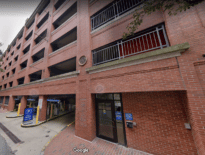Economic growth in Massachusetts accelerated from the third to the fourth quarter of 2021, with real gross domestic product increasing at an 8.2 percent annualized rate, and the growth is expected to continue at slower rates over the first half of 2022, local economists reported on Thursday afternoon.
MassBenchmarks, which is published by the UMass Amherst Donahue Institute in cooperation with the Federal Reserve Bank of Boston, said real GDP in Massachusetts increased at a 6.9 percent annualized rate in the third quarter, with growth picking up in the fourth quarter due to a “respite from COVID infections in the fall.”
Looking ahead through its leading index, MassBechmarks foresees a step back from the fourth quarter pace, but continued growth rates of 5.6 percent in the first quarter of 2022 and 4.6 percent in the second quarter.
“The Delta variant contributed to slower growth in the third quarter, and the Omicron variant began to affect the economy only towards the end of the fourth quarter,” according to MassBenchmarks. “Otherwise, the fourth quarter of 2021 was a period of strong employment, income growth, and robust consumer spending, with somewhat stronger performance in Massachusetts than nationally.”
Despite robust employment growth that has brought back many of the jobs lost during the pandemic, the number of jobs in Massachusetts at the end of 2021 remained 4.1 percent below the levels of payroll employment at the pre-pandemic peak during February 2020. The national jobs gap remains 2.3 percent below the February 2020 peak.
The jobless rate in Massachusetts fell to 3.9 percent in December, down from 8.4 percent in December 2020.
Northeastern University professor Alan Clayton-Matthews, a MassBenchmarks editor, said average wage and salary data show worker income locally kept up with inflation during the second half of 2022.
“The core rate of consumer price inflation – the CPI excluding food and energy – was 2.5 percent in the fourth quarter and 4 percent in the third quarter in the Boston metropolitan area, lower than the national CPI of 5.5 percent in the fourth quarter and 5.3 percent in the third quarter,” Clayton-Matthews said.
MassBenchmarks said Massachusetts consumers spent generously during the fourth quarter, with outlays on goods subject to the state sales tax and motor vehicle sales taxes rising at a 13.5 percent annual rate, after declining by 12.9 percent in the third quarter.
As always, economists had no shortage of downsides ahead, listing weaker consumer confidence and falling stock prices, and concerns about inflation, international unrest, and the effect of COVID-19 on the economy.
About two and a half weeks after the state reached a record high level of new COVID-19 infections, Gov. Charlie Baker said Thursday that the data indicate Massachusetts is now on “the back side of the omicron surge.”
Daily case counts and additional monitoring of COVID-19 prevalence in the Boston area’s wastewater have both dropped from early January peaks, the governor said. Average hospitalizations, which tend to lag changes in infections, have also started a downturn from their recent highs.
“We are definitely on what I’d call the back side of the omicron surge,” Baker said in a live interview on GBH News’s “Boston Public Radio.”
On Beacon Hill, budget writers this month marked up their estimate of fiscal 2022 revenues by $1.5 billion, reflecting some level of optimism about the first half of the year, but agreed that soaring tax collections will slow down to a 2.7 percent growth rate in fiscal 2023, which begins on July 1.




 |
| 


